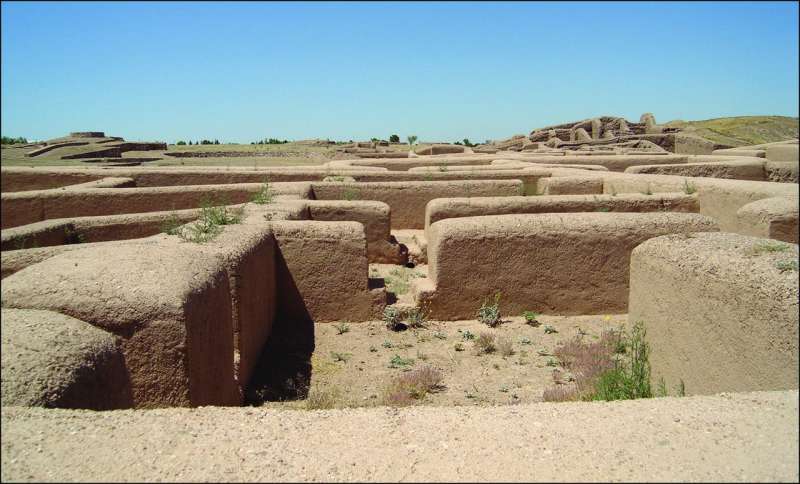This article has been reviewed according to Science X's editorial process and policies. Editors have highlighted the following attributes while ensuring the content's credibility:
fact-checked
peer-reviewed publication
trusted source
proofread
DNA analysis reveals close relative mating and child sacrifice among elites in precontact Mexico

Archaeologists have analyzed the DNA of a unique child burial at the precontact Mexican site of Paquimé, suggesting it is a rare example of close relative mating between elites for ritual sacrifice.
Paquimé was the political and ritual center of the pre-Columbian Mogollon culture during the 13th and 14th centuries AD, and has been investigated extensively by archaeologists.
Despite this, little is known about the genetic makeup and social organization of the site's population.
"Archaeologists have studied Paquimé for decades and have learned much about its rise and fall, the people who lived there, their ritual practices, and more," states lead author of the research, Dr. Jakob Sedig from Chronicle Heritage and Harvard University.
"However, many questions remain, especially about the site's social hierarchy and how Paquimé's inhabitants were biologically related to each other and their neighbors."
To answer these questions, Dr. Sedig and a team from several US and Mexican institutions performed DNA analysis on a unique child burial from the site. Their results are published in the journal Antiquity.
The individual was interred in the "House of the Well," a building thought to be the ceremonial center of Paquimé due to the ritual objects within and its association with a sacred underground well. This suggests that the child came from an elite lineage.
The most important finding of this analysis was that the child had unusually long 'runs of homozygosity' (RoH). RoH indicate how related an individual's immediate ancestors are. The longer the runs, the more closely related the parents.
"This individual has one of the highest runs of homozygosity values of all published ancient individuals in the Western Hemisphere," says Dr. Sedig. "This means that the child had parents who were more closely related than first cousins."
In most societies, close-kin relationships are viewed as taboo. However, in many ancient cultures, an exception was made for elites, who were not subject to the same taboos.
Additionally, a previous study of the burial proposed that the child was a victim of human sacrifice. This implies that the elites at Paquimé felt sacrificing a child of two closely related individuals in their lineage was especially powerful, and in this case was used to consecrate a ritually significant building.
This could have large implications for our understanding of social organization in precontact Mexico.
"These results provide unique insight into social hierarchy and socio-religious practices at Paquimé," concludes Dr. Sedig.
"The next steps in this research are to continue analyzing the ancient DNA of individuals from Paquimé and northern and western Mexico to help us understand how different groups moved and mixed through time."
More information: Jakob Sedig et al, High levels of consanguinity in a child from Paquimé, Chihuahua, Mexico, Antiquity (2024). DOI: 10.15184/aqy.2024.94
Journal information: Antiquity
Provided by Antiquity




















